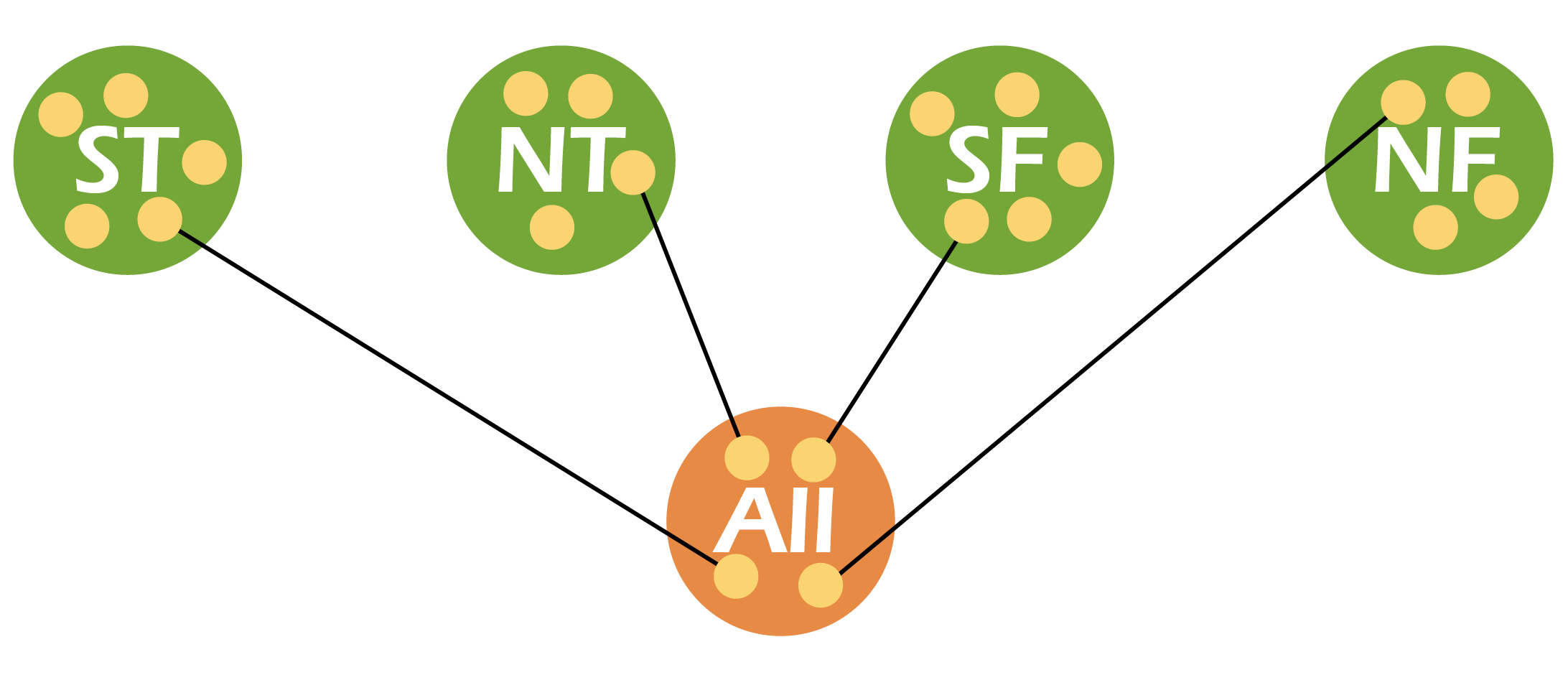07 Jan Using the MBTI and the TKI to Make Better Career Choices
Ralph H. Kilmann, co-author of the Thomas-Kilmann Instrument (TKI)
I’d like to comment on the organic relationship between the MBTI and the TKI—between psychological types and conflict modes, and between magnifying differences and resolving differences. In this discussion, I will suggest how educational settings (high schools, colleges, and universities) can provide students with a very powerful experiential exercise—one that vividly demonstrates (1) WHY different students value some careers over others and (2) HOW they can resolve the many conflicting choices before them.

Several years ago, a university asked me to arrange an experience that would help students select their major (with less chance of switching to other majors once or more times during their educational program, which is very costly to all concerned). This university also realized that certain majors are erroneously viewed as being of greater value than others, which tends to steer students away from these worthwhile pursuits (such as the humanities, the arts, and philosophy). Furthermore, even if students eventually gravitate to a major that best suits their interests and temperament, the university still wanted every student to respect all vocations and professions in society…in essence, to have a broad-minded education.
Conveniently, the guidance counseling service provided me with a group of about 25 diverse undergraduates—who came from different parts of the country (and other countries as well) and whose choice for major was the familiar “undecided.” In a four-hour afternoon workshop, I began by having each student take the MBTI and the TKI. I then gave them an overview of what these tools measure. This assessment part of the workshop took about ninety minutes.
I next sorted the 25 or so undergraduates into their four type groups: ST, NT, SF, and NF. There were fewer members in the SF and NF groups, but still a sufficient number to continue with the exercise. Then I provided the topic for a thirty-minute group discussion: “What is the best major and why?”

Following the discussion, I asked each group to share its conclusions with the rest of the community. That’s when the fun began! The ST group emphasized how majors in business, engineering, and computer science were obviously of most value to society, and therefore ensured the most successful and stable careers. The NT group argued that majors in science, economics, and finance provide the big-picture view, so careers in these fields would allow students to see their place in the world, while making significant contributions to knowledge and new technologies. The SF group suggested that majors in communication, psychology, and human resources would enable students to learn the skills to have more meaningful and productive relationships—whether in the workplace or in their family. The NF group insisted that the best majors would be those that could better appreciate and improve society, which included the humanities, theology and religious studies, and the teaching professions.
It was amazing to see how each type group, upon hearing the other presentations, was taken aback at the totally different way these other groups approached the exact same assignment: How could it be that each of the four groups found value—and justification—in one type of major over the other possibilities? These community presentations opened every student’s eyes to the inherent value of ALL majors—depending on one’s psychological type!
But the experiential exercise did not end there: I next assigned each student in each group a number in sequence (#1 through #4 and then again starting at #1). I then asked all those who had been assigned #1, to form a new group (which necessarily cut across the membership of the four type groups). I asked the same of those who were assigned #2, #3, and #4. Basically, each new group, which I called a “mode” group (instead of the earlier “type” group), now had members with a mixture of ST, NT, SF, and NF psychological types.
For the next thirty minutes, I asked each new group to use the five conflict modes, particularly the collaborating mode, to see if it could agree on an integrated position about what are the best majors and career choices for undergraduate students. After the allotted discussion time, I asked each mode group to present its conclusions to the whole community.
It would take too much space to detail the four presentations across the mode groups. As might have been anticipated, however, the four presentations were very similar—if for no other reason that the groups contained representatives of all the psychological types. But the beauty of this exercise was revealed as the four groups expressed a deep respect for ALL majors and careers—now seeing that all vocations and professions play a vital role in a healthy society. Whatever preconceptions the students had about one major or another before this exercise, they now expressed a greater openness to all the choice before them, while realizing (1) WHY their psychological type and (2) HOW they resolve the inherent conflicts about career choices should never result in them devaluing—or dismissing—the purpose that each career provides them and the rest of the world.
Kilmann Diagnostics offers a series of eleven recorded online courses and nine assessment tools on the four timeless topics: conflict management, change management, consciousness, and transformation. By taking these courses and passing the Final Exams, you can earn your Certification in Conflict and Change Management with the Thomas-Kilmann Instrument (TKI). For the most up-to-date and comprehensive discussion of Dr. Kilmann’s theories and methods, see his 2021 Legacy Book: Creating a Quantum Organization: The Whys & Hows of Implementing Eight Tracks for Long-term success.




